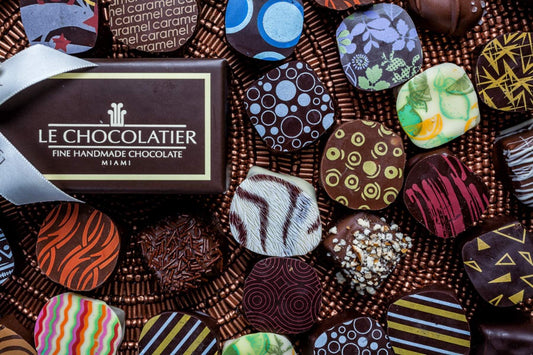Origins Of Chocolate
THE ORIGINS OF CHOCOLATE AND HOW IT IS MADE
The tasty secret of the cacao (kah KOW) tree was discovered 2,000 years ago in the tropical rainforests of the Americas. The pods of this tree contain seeds that can be processed into chocolate. The story of how chocolate grew from a local Mesoamerican beverage into a global sweet encompasses many cultures and continents. The first people known to have made chocolate were the ancient cultures of Mexico and Central America. These people, including the Maya and Aztec, mixed ground cacao seeds with various seasonings to make a spicy, frothy drink.
Later, the Spanish conquistadors brought the seeds back home to Spain, where new recipes were created. Eventually, the drink’s popularity spread throughout Europe. Since then, new technologies and innovations hav e changed the texture and taste of chocolate, but it still remains one of the world’s favorite flavors.
Cacao Beans
GROWING HIGH QUALITY CACAO:
High quality chocolate starts in shaded, jungle-like forests of cacao trees. This aids in preserving the jungle environment surrounding the cacao trees. Prestigious chocolate makers work closely with cacao growers to develop desired chocolate flavors in the beans. Growers carefully manage the health and development of the delicate trees, inspecting them regularly for any signs of disease. Cacao beans are grown and harvested year-round, primarily from October through March. Although more labor intensive, frequent harvesting ensures that each cacao pod is allowed to reach optimal ripeness before being picked.
Cocoa pods on tree
HARVESTING, FERMENTING AND DRYING:
Growers harvest the cacao pods at peak ripeness, opening the pods to take out the beans, and then perfectly fermenting the beans, usually in wooden boxes covered with banana leaves for an average period of 3-5 days, depending on the genetics of the beans. Finally, the growers spread the beans out to dry naturally in the sun, sometimes using a rake to design traditional and carefully-crafted patterns. Specific fermentation methods are a major benchmark in developing preferred flavor characteristics. With respect to duration, for instance, too short a fermentation results in chocolate with bitterness, astringency or little flavor, whereas too long a fermentation causes the chocolate to take on putrid or foreign tastes. Also, sun drying enhances natural chocolate flavor and avoids the pitfalls of other methods.
Ripe cocoa pods ready for processing into chocolate
SELECTING HIGH QUALITY BEANS:
Prestigious chocolate makers work closely with growers throughout the bean selection process. Small batches of dried cacao beans and finished chocolate are sent back and forth between each country of origin and the chocolate manufacturer throughout the harvest period (October – May primarily) so that each result can be properly assessed. Once selection is complete, the chosen beans are shipped to the factory from the selected bean’s country of origin, where the chocolate is processed and transformed painstakingly into chocolate.
ROASTING, WINNOWING, GRINDING, BLENDING AND REFINING:
The selected cacao beans must first be roasted, then winnowed. The winnower (or crack-fanner) cracks open the roasted cacao beans and carefully separates out the shells from the nibs. The nibs are then slowly ground into finer and finer particles until they become a dark, bitter liquid (chocolate liquor, also called cocoa mass).
After being finely ground, different batches of beans may be blended or not (as with single origin chocolates), and other ingredients such as sugar, added cocoa butter and milk – in the case of milk chocolate – may be added. The resulting thick chocolate is taken from the mixer and refined further to an extremely smooth consistency.
CONCHING, TEMPERING AND MOLDING:
Conching is the crucial next step in flavor development, where nuances and complexities are created in the chocolate flavor. Last the chocolate is tempered to achieve perfect consistency and then molded into bars.
LE CHOCOLATIER SELECTS THE FINEST CHOCOLATE TO WORK WITH:
Finally, Le Chocolatier selects the highest quality bars from the finest chocolate makers in the United States and Europe which it then transforms into its legendary confections using superb recipes and masterful artistry and technique.


